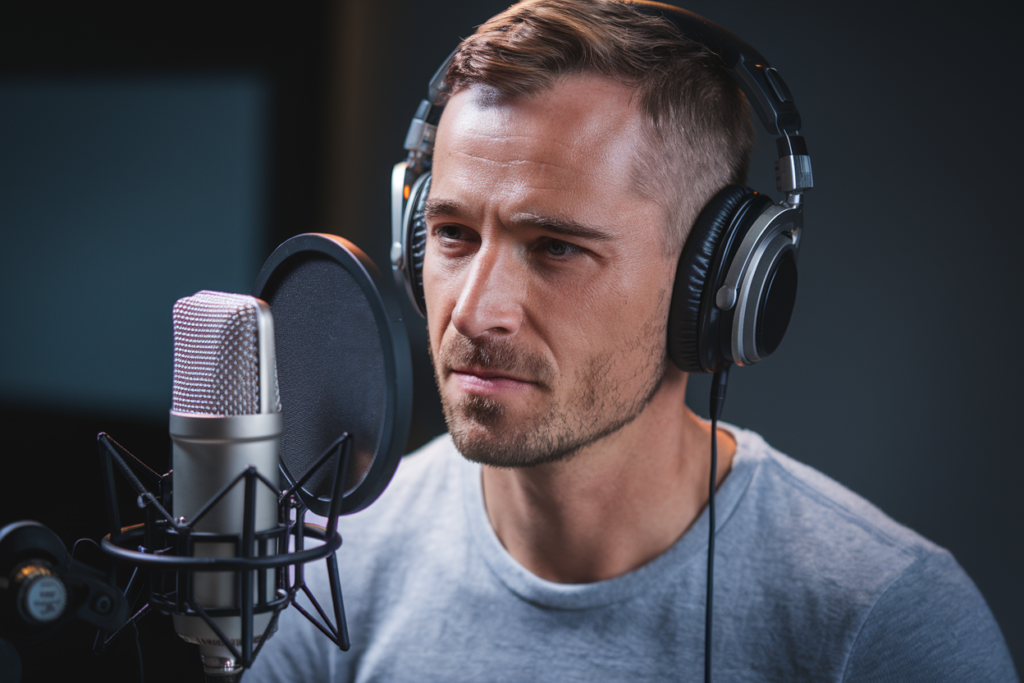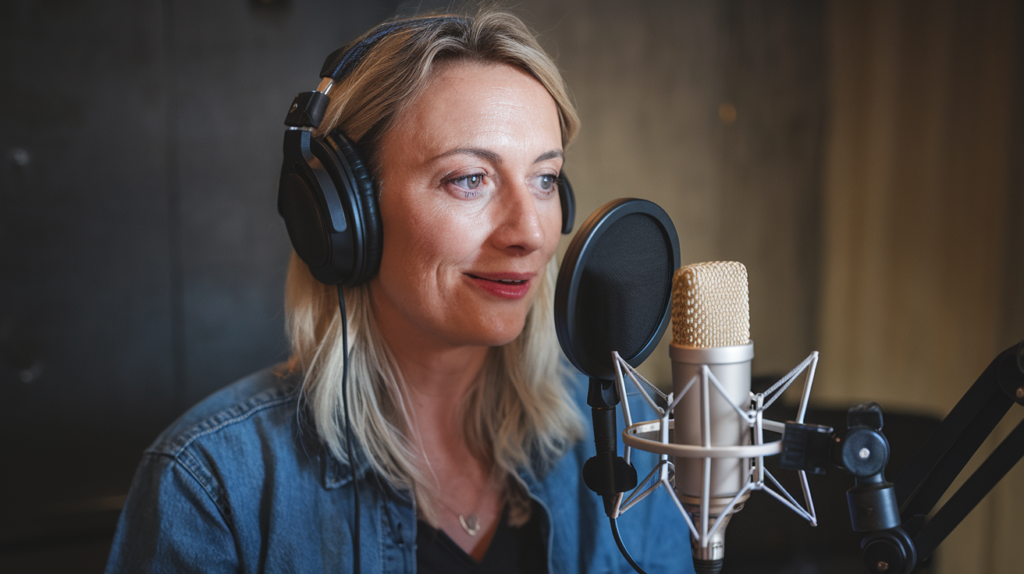Key Takeaways
- Understanding Lip Sync: Accurate lip sync in French dubbing requires a blend of technical skill and artistic interpretation to enhance viewer immersion.
- Importance of Accurate Synchronization: Proper lip sync maintains the integrity of original performances, creating a believable experience that fosters emotional connections with viewers.
- Challenges in Dubbing: Translating dialogue while considering syllable counts, cultural contexts, and timing are key hurdles that voice actors must navigate for effective synchronization.
- Pre-Recording Preparation: Analyzing original performances and developing detailed scripts can significantly improve synchronization outcomes during dubbing sessions.
- Voice Talent Selection: Choosing skilled voice artists who can convey emotion and adapt their delivery is crucial for achieving authentic character portrayals in dubbed content.
- Leveraging Technology: Utilizing advanced audio editing software and synchronization tools streamlines the dubbing process, ensuring precise alignment between voiceovers and visuals.
Ever wondered why some French dubbing feels off? Getting accurate lip sync for French dubbing in France isn’t just about translating words; it’s about capturing the essence of the original performance. If you’ve ever cringed at a poorly synced scene, you know how crucial this skill is.
You’re not alone in wanting to master this art. Whether you’re a budding voice actor or a seasoned professional, achieving that perfect synchronization can elevate your work and enhance viewer experience. Let’s dive into practical tips and techniques that’ll help you create seamless lip syncs that resonate with audiences while staying true to the original content.
Understanding Lip Sync in Dubbing
Achieving accurate lip sync in French dubbing involves a blend of technical skill and artistic interpretation. It’s essential for ensuring that the dialogue aligns seamlessly with on-screen performances, enhancing viewer immersion.
Importance of Accurate Lip Sync
Accurate lip sync plays a crucial role in maintaining the original performance’s integrity. When voice actors match their delivery to the lip movements of characters, it creates a more believable experience for viewers. This precision allows audiences to connect emotionally with characters, making them feel as if they’re truly hearing what’s being said. Ultimately, great lip sync can elevate the overall quality of a production and foster greater audience engagement.
Challenges in French Dubbing
Several challenges arise when working on French dubbing projects. First, translating dialogue while keeping syllable counts in mind requires both linguistic expertise and creativity. Additionally, voice artists must adapt their performances to fit different cultural contexts without losing authenticity. Timing poses another challenge; delivering lines too quickly or slowly can disrupt the flow of scenes and disengage viewers. Each hurdle demands careful attention from voice actors to ensure that every word resonates just right with both the visuals and emotions portrayed on screen.
Techniques for Achieving Lip Sync
Achieving accurate lip sync requires a blend of skill and strategy. Focusing on technical preparation and selecting the right voice talent plays a crucial role in enhancing the dubbing process.
Pre-Recording Preparation
Pre-recording preparation sets the foundation for successful lip sync. Start by analyzing the original performance closely, noting nuances, emotional cues, and timing. Create a detailed script that captures not just the dialogue but also syllable counts and pauses to align with mouth movements.
Consider using software that visualizes audio waveforms; this can help you match phrases to on-screen actions more effectively. Conduct rehearsals with your voice actors to ensure they grasp character emotions and rhythm before recording begins. This practice fosters deeper connections between their performances and what appears visually, making synchronization much easier.
Voice Talent Selection
Selecting skilled voice talent is vital to achieving seamless lip sync. Look for voice artists who can convey emotion naturally while adapting their delivery to fit cultural contexts. Their ability to mimic speech patterns accurately enhances viewer immersion by making characters feel authentic.
Evaluate potential candidates by listening to previous work samples, focusing on versatility in tone and style. A well-rounded voice actor brings depth and life into characters, allowing audiences to connect on an emotional level during scenes. Prioritize those experienced in dubbing or have demonstrated strong voiceover skills, as they understand how timing impacts overall performance.
By combining thorough pre-recording preparation with adept voice talent selection, you set yourself up for effective French dubbing that resonates with viewers while honoring the original content’s essence.
Tools and Software for Lip Sync
Achieving accurate lip sync in French dubbing relies heavily on the right tools and software. These resources streamline the process, making it easier to align voiceovers with visuals perfectly.
Audio Editing Software
Audio editing software plays a crucial role in refining your recordings. Programs like Adobe Audition or Audacity allow you to edit sound quality, adjust volume levels, and manipulate audio clips seamlessly. You can isolate specific segments of dialogue, ensuring clarity while matching them closely with the original performance’s emotional tone. Imagine being able to tweak each syllable until it fits just right! This precision enhances not only synchronization but also the overall viewer experience.
Synchronization Tools
Synchronization tools are essential for aligning audio with video effectively. Software such as Avid Pro Tools or Reaper provides powerful features that help visualize audio waveforms alongside video tracks. You can see precisely where mouth movements occur, allowing you to time your voice talent’s delivery accurately. Utilizing these tools minimizes guesswork and maximizes efficiency during recording sessions. Plus, some programs offer playback options that let you rehearse scenes multiple times before finalizing—perfect for perfecting those tricky lines!
By leveraging advanced audio editing software and synchronization tools, you’ll set yourself up for success in achieving flawless lip sync that resonates with audiences while honoring the original content’s essence.
Best Practices in French Dubbing
Achieving accurate lip sync in French dubbing involves several best practices that enhance the viewer’s experience. Focus on these techniques to ensure your voiceover projects resonate with audiences.
Cultural Considerations
Cultural nuances play a crucial role in dubbing. Understand the cultural context of the original content and adapt dialogue accordingly. When localizing phrases, consider idiomatic expressions that might not directly translate but carry significant meaning for the audience. Research regional dialects and preferences to align your voice talent’s delivery with local expectations. This approach ensures that characters remain relatable while preserving their essence and emotional weight.
Timing and Pacing
Timing is everything in dubbing; it’s essential to match dialogue rhythm with visual cues. Analyze scenes carefully, noting pauses, emphatic moments, and character interactions. Encourage your voice actors to practice pacing their lines according to the on-screen action. Utilize audio editing tools for precise adjustments if necessary—this fine-tuning can make all the difference in achieving flawless synchronization. Remember, good timing allows emotions to flow naturally, enhancing viewer immersion without distracting from the narrative.
By implementing these best practices into your workflow, you create more impactful French dubbings that connect deeply with audiences while honoring the integrity of original performances.
Conclusion
Achieving accurate lip sync in French dubbing is a nuanced skill that combines technical expertise with artistic sensitivity. By focusing on preparation and cultural adaptation you can elevate your voice performances to resonate deeply with audiences.
Utilizing the right tools will streamline your process while fostering a connection between dialogue and visuals. Embrace these techniques to enhance viewer immersion and maintain the integrity of the original work. With dedication and practice you’ll not only improve your craft but also enrich the overall experience for viewers, making every project a testament to quality dubbing.
Frequently Asked Questions
What is the main challenge in achieving accurate lip sync in French dubbing?
Achieving accurate lip sync in French dubbing involves translating dialogue while preserving the original performance’s essence. This requires not only linguistic expertise but also an understanding of cultural context and emotional delivery to ensure that the dubbed version resonates with viewers.
Why is precise lip sync important for viewer experience?
Precise lip sync enhances viewer immersion by maintaining the integrity of the original performance. It allows audiences to connect emotionally with characters, ensuring that every word aligns appropriately with visuals and emotions portrayed on screen.
What techniques can help improve lip sync accuracy?
To improve lip sync accuracy, voice actors should analyze the original performance, create a detailed script, use audio visualization software, and conduct rehearsals. Meticulous preparation and selecting skilled voice talent are essential for effective synchronization.
How do tools like Adobe Audition aid in French dubbing?
Tools like Adobe Audition help refine recordings by adjusting sound quality and clarity while matching the emotional tone of performances. They play a crucial role in ensuring that audio aligns accurately with video during the dubbing process.
What cultural considerations should voice actors keep in mind?
Voice actors must understand and adapt to the cultural context of original content by incorporating idiomatic expressions and regional dialects. This ensures relatability and enhances emotional connection within their audience during dubbing.







